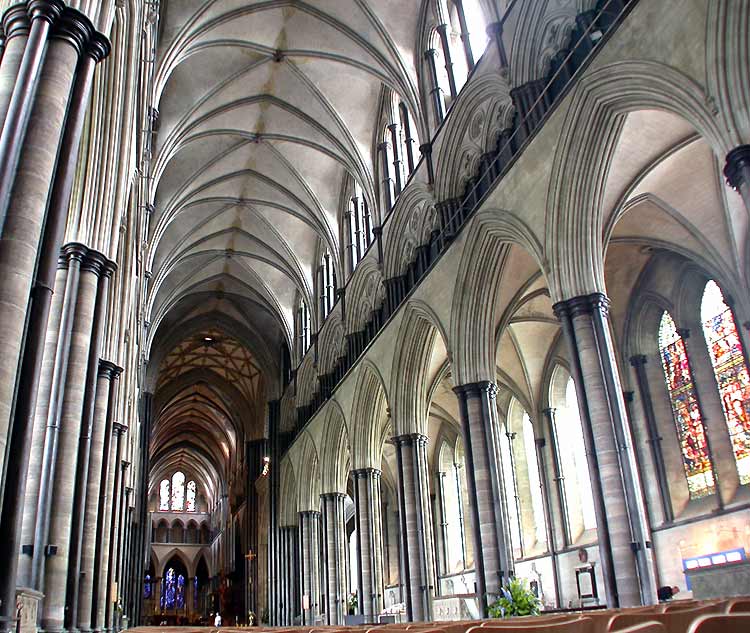Britain’s long and complex topographical history has delivered an exceptionally differing scope of rock sorts, huge numbers of which have been quarried for building purposes throughout the hundreds of years. A portion of the nation’s best known building stone quarries have worked persistently since most punctual times. A lot of people all the more, in any case, have since a long time ago shut and their stones are no more promptly accessible. Unique quarry sources might regularly be hard to spot as rural improvement and the development of urban communities, towns and towns have steadily changed the area surface.
Sourcing suitable stone for the preservation and repair of memorable places of worship and different structures can be troublesome and, in the same way as such a variety of parts of protection, is progressively turning into the safeguard of expert specialists. In any case, it is vital that everybody concerned with the upkeep and support of our structures or landmarks ought to themselves be mindful, if at an exceptionally essential level, of the techniques that the masters are prone to take after. While a few regions of this work are best left to the experts, others oblige closer concentrate on and with a bit analyst work can be a useful side interest.
 A standout amongst the most critical wellsprings of data in this field is The British Geological Survey (BGS) as it keeps up a thorough chronicle of the topography of Britain’s building stones. Tailing its structuring in 1839, one of the first commissions of the BGS was to find a suitable building stone for the development of the new Palace of Westminster structures in 1839. From that point forward the BGS has reported in excess of 1,000 distinctive building and enhancing stones which have been quarried and utilised as a part of Britain and has embraced the accumulation of agent examples from working quarries. The association now keeps up the nation’s most exhaustive database of topographical maps, specimens and chronicles. This dataset is utilised as a part of a wide mixed bag of connected geographical examination, including the sourcing of building stone.
A standout amongst the most critical wellsprings of data in this field is The British Geological Survey (BGS) as it keeps up a thorough chronicle of the topography of Britain’s building stones. Tailing its structuring in 1839, one of the first commissions of the BGS was to find a suitable building stone for the development of the new Palace of Westminster structures in 1839. From that point forward the BGS has reported in excess of 1,000 distinctive building and enhancing stones which have been quarried and utilised as a part of Britain and has embraced the accumulation of agent examples from working quarries. The association now keeps up the nation’s most exhaustive database of topographical maps, specimens and chronicles. This dataset is utilised as a part of a wide mixed bag of connected geographical examination, including the sourcing of building stone.
Where a building or landmark is concerned, the conditions for sourcing new stone may be considered under the accompanying headings: stone recognisable proof, sourcing and matching.
Distinguishing The Stone
All regular stones are grouped into one of three gatherings of rock sorts-molten, sedimentary or transformative. Molten rocks are hard and crystalline and make up the antiquated material of the earth. They are structured straightforwardly by the cooling of hot liquid magma. The best known molten rock utilised for building or grand reasons for existing is most likely stone. Rocks are coarse grained shakes in which extensive gems of polished quartz, obscure white or pink feldspars and dim tan or dark ferromagnesian minerals (mica, hornblende and so on) can undoubtedly be related to the stripped eye. The coarse nature of the gems let us know that the rock framed from a magma that cooled gradually profound in the world’s outside layer permitting individual precious stones to develop to a substantial size. Some well known rocks incorporate Cumbrian Shap with its expansive pink feldspars and Cornish De Lank which has huge white feldspar gems. Numerous different sorts of coarse grained volcanic rock happen, (for example, the granodiorites of Mountsorrel in Leicestershire), yet few are utilised regularly for building purposes and most need to be recognised by masters.
On the off chance that liquid magma figures out how to climb through the outside and develop at the world’s surface, most recognisably as a soak sided volcanic cone or as a liquid magma stream, then it will cool rapidly to structure a molten, volcanic rock. Such quick cooling avoids extensive precious stones creating and the ensuing rocks are fine grained with individual minerals hard to recognise aside from by hand lens or magnifying instrument. There are illustrations of such fine grained volcanic shakes in the UK, for example, the dark basalts of Antrim, Northern Ireland, yet all in all few have been utilised for building as a part of this nation.
Transitional in source and gem size to these two extremes are magmas infused as liquid sheet-like bodies into the world’s outside and cooled just underneath the world’s surface. They are termed ledges or dykes. The best sample is presumably the Whin Sill in Northumberland, structured of a hard, dim greenish ash dolerite that was utilised widely as a part of parts of Hadrian’s Wall. Despite the fact that these rocks happen generally they seldom give more than a nearby building stone. On the other hand, due to their hardness, they are generally quarried for total.
 The sedimentary rocks incorporate our most regular building stones-the sandstones and lime stones. Sandstones are structured by the weathering and disintegration of previous rocks. They comprise of little pieces or grains held together by regular bonds, for example, calcium carbonate (calcite) or silica. Most sandstone comprises of grains of quartz, feldspar and little shake pieces. Their high quartz substance makes them hard, tough building stones. By measuring the normal size of the grains, sandstones can be partitioned into fine, medium or coarse grained sorts. A few sandstones can be distinguished by the vicinity of unique mineral segments, in any event at a provincial level. Two illustrations of this are the sandstones from the Lower Cretaceous rocks of south east England which usually contain the green mineral glauconite, and the fine grained Triassic sandstones from the East Midlands generally known as ‘skerry’, which are regularly solidified by dolomite.
The sedimentary rocks incorporate our most regular building stones-the sandstones and lime stones. Sandstones are structured by the weathering and disintegration of previous rocks. They comprise of little pieces or grains held together by regular bonds, for example, calcium carbonate (calcite) or silica. Most sandstone comprises of grains of quartz, feldspar and little shake pieces. Their high quartz substance makes them hard, tough building stones. By measuring the normal size of the grains, sandstones can be partitioned into fine, medium or coarse grained sorts. A few sandstones can be distinguished by the vicinity of unique mineral segments, in any event at a provincial level. Two illustrations of this are the sandstones from the Lower Cretaceous rocks of south east England which usually contain the green mineral glauconite, and the fine grained Triassic sandstones from the East Midlands generally known as ‘skerry’, which are regularly solidified by dolomite.
A wide mixed bag of lime stones are utilized as building stones. They are mainly made out of calcium carbonate (calcite) and are moderately delicate in examination to generally sandstones. Their gentler nature permits them to be effectively cut and they are our best freestones. Most lime stones were structured by the gathering of the broken shells of marine life forms on the seabed in tropical or sub-tropical situations. Great illustrations incorporate the Clipsham and Ancaster stones.
Sourcing the Stone
Having made a preparatory recognisable proof of the building stone, the following step is to discover the first quarry Landford Stone can help here hotspot for the stone. The first blot to look for data on the provenance of a building stone is in unique records or chronicles identified with the building. In the circumstance that, as is regularly the happening, this turns into a vain inquiry then somewhat more analyst work is needed.
The primary step is to make the age of the structure in which the stone happens. Stone structures built from medieval times or prior (this incorporates an extensive extent of our houses of worship) to the late eighteenth century utilised nearby stone sources where possible, due to the challenges and expenses of conveyance. Evident exemptions are high status structures and structures in seaside circumstances or near safe waterway frameworks where water transport was accessible. Especially alluring stones for enriching and stupendous work, for example, the dark marble from Tournai (Belgium) have been foreign from medieval times. For most early structures, on the other hand, neighbourhood stone sources ought to be examined foremost. The geographical maps and documents held by the BGS distinguish the diverse sorts of stone that outcrop the nation over, and are a precious asset for examination into potential stone sources in any given range.
From the last piece of the eighteenth century to the early piece of the nineteenth century, the development of the trench system gave the first national transportation framework for moving cumbersome merchandise, for example, stone the nation over. Existing stone quarries soon exploited the channels and a lot of people new quarries immediately opened up. The channels were, on the other hand, soon overshadowed by the advancement of the lines. Transportation costs quickly plunged as the rail system broadened broadly and by c1850 stone could be supplied to very nearly any piece of the nation at a sensible expense. Welsh slate, for instance, quickly showed up on tops all through the nation, removing a lot of people just as solid however more lavish provincially quarried mixed bags.
The nineteenth century was a blast time for the British stone industry, with a large number of new quarries opening the nation over to supply the constantly becoming urban focuses, processing plants and houses. nineteenth century structures are consequently more inclined to contain stone from outside the neighbourhood, supplied by the much bigger scale quarrying operations that created in Derbyshire, Yorkshire or Lancashire.
Manufacturers and designers presently utilise stone from significantly further abroad. Late structures in the London zone have utilised Indian marbles and Australian sandstones. Today you can even view and request your stone by means of the Internet from anyplace on the planet and, at times, have it on location, prepackaged in polythene, inside days.
Matching the Stone
Discovering the first stone source takes care of just piece of the issue. By and large it soon gets to be clear that the first stone is no more quarried. Few of the stone sources that supplied Britain’s initial clerical structures, for instance, have made due as creating quarries into the 21st century-some just worked long enough to finish the congregation and a couple of neighbourhood structures. Luckily, notwithstanding, if the stone has been accurately distinguished and its source legitimately spotted, then different choices can be considered. Re-opening the first quarry may be a probability, giving the neighbourhood organisers can be persuaded. The commercial concerns of re-opening even a little quarry on an interim premise can be sort of overwhelming, so it might be helpful to evaluate whether there is a more extensive business sector for the stone which would bode well. In the East Midlands region, for instance, one nearby stone which has been generally utilised for chapel structures and town lodging is the red-tan and orange-tan sandy ironstone, referred to geologists as the Lower Jurassic, Marlstone Formation. This stone was broadly quarried for building purposes from medieval times yet no quarries now exist in the territory. Existing structures are normally in a dismal condition of repair just for absence of promptly accessible matching stone. BGS maps demonstrate that there are still wellsprings of the stone accessible in the territory, and a deliberate exertion by invested individuals is presumably required to create another quarry for protection purposes. Customary building stone quarries can be little concerns and if legitimately arranged and oversaw can be worked utilising low-tech strategies so as not to harm the stone or the nature’s turf.
In numerous examples it may not be important to go the extent that re-opening an unique quarry to distribute stone. In Britain nowadays there are more than 350 building stone quarries still in operation, quarrying a wide mixture of great quality, tough stones. A few quarries have a history extending once more to Roman times. Cautious matching of an unique stone regarding its geography, surface, mineralogy (by flimsy segment investigation) and shade with one or other of these stones ought to give a suitable matching substitution as a rule.
The BGS maps and files are an essential wellspring of topographical data where some of these inquiries can be promptly replied. Nonetheless, there is no true substitute for experience, and taking a gander at stone in structures of shifting ages and in whatever number distinctive areas as could reasonably be expected is still the most ideal approach to turn into a master in the subject.







